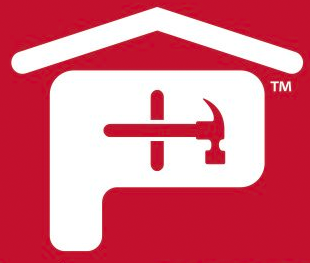If you had your roof inspected this spring (something you should do once a year) and noticed black streaking and dark stains, you may have an infestation that requires immediate attention. The discoloration is caused by a type of algae that lives off the minerals in certain types of roofing shingles. Those dark stains on the roof give your home a tired, worn look, but it’s not just a cosmetic problem.
Algae can do more than just ruin a roof’s appearance. Algae feed on the limestone filler that gives roofing shingles their weight. It can cause shingles to “cup” underneath, which decreases their life span. Algae can also cause roofing shingles to lose protective surface granules with every rainfall. This condition reduces a roof’s ability to reflect sunlight, which results in overheating. Furthermore, even if the rest of your home’s exterior and landscaping are in good shape, those roof streaks diminish your home’s overall well-maintained appearance, thus reducing its possible curb appeal.

Algae thrive in moisture, which is why it’s seen most often on shaded or north-facing roof slopes that don’t get a lot of direct sun. They attach to roof material tenaciously, and grow outward. When it rains, they hold water – the enemy of all building materials – longer than the rest of the roof and eventually lead to deterioration or rot. Algae will not just detract from a home’s aesthetic appeal, but could actually lead to total roof failure. It is necessary to do something quickly to restore the appearance and functionality of your roof.
So the question that must be asked and answered is: Should I clean my roof or protect it?
One important bit of advice is that any roof work is not something you should do by yourself. It's very risky business whether installing a roof or cleaning one. Hire a roofing professional for any roof work, because a do-it-yourself method may just be the wrong method. To avoid further damage to the roof, call a professional who can provide the service safely.
Roof Cleaning Options
Any chemical roof cleaning is an extremely delicate process. Industrial-strength cleaners must be gently applied with a sponge or a hand-held sprayer, and then rinsed off thoroughly. However, this type of cleaning is only a temporary fix. The process has to be applied at least once, and possibly twice, every year to prevent colonies of algae from rejuvenating.
One method is to apply oxygen bleach to the roof, one section at a time. Oxygen bleach is preferred, not chlorine bleach, which can harm building materials and kill grass, shrubs, flowers, and other greenery around a house. Overspill of chlorine bleach can also void a home's termite warranty due to its interaction with protective chemicals in the ground that would render any termite protection ineffective.
Oxygen bleach is available in a powder form that is mixed with water and applied using a standard garden hose sprayer. Never use a power washer on shingles. As the bleach dissolves, the release of oxygen molecules breaks down the algae. The solution will foam up as it is working. Work in small sections, keep spraying if necessary and do not let the surface dry. Allow about 20 minutes before lightly scrubbing the residue from the shingles. Re-application may be needed for heavy algae infestation situations.
Algae Prevention Options
One time-tested method of preventive action against algae is to install strips of copper or zinc under the shingles near the top of the roof. These strips release metallic ions that discourage the presence of algae. Every time it rains, the water that washes over the exposed edges of the strips will pick up these ions from the metal and inhibit the algae from gaining a foothold.
The New Roof Option
At present only one major manufacturer, Atlas Roofing, produces an algae resistant line of asphalt shingles that come with the power of Scotchgard™ Protector and a Lifetime* Limited Warranty. StormMaster® Slate, StormMaster® Shake, and Pinnacle® Pristine shingles feature Scotchgard™ Protector and are guaranteed to resist algae and retain the shingle’s color for the life of the roof.* These shingles contain a preservative to inhibit discoloration by algae – which only applies to the shingle.
Roofing shingles with Scotchgard™ Protector contain copper granules and are far more effective at protecting against algae growth than rooftop strips.
When selecting one of these methods, your final decision will surely be based on the cost. At first glance, cleaning would seem far less expensive. However, the average cost for a roof washing is around $250 and may need to be done twice a year. That would add up to at least $10,000 over a 20-year period. With a new roof, using Atlas Pristine shingles featuring Scotchgard™ Protector, there would be just the initial cost and then no worries about algae streaks and algae stains for the life of the roof*.
Whichever of the possible remedies for roof algae infestation you choose, time is of the essence. With each passing day, your roof becomes weaker and weaker as algae feeds on your shingles. At atlasroofing.com you can learn how Atlas Pristine shingles featuring Scotchgard™ Protector can save your roof from the damaging epidemic of algae.
* Refer To Atlas Lifetime Limited Warranty For All Coverage Requirements.



 Gear!
Gear! PRO LOGIN
PRO LOGIN